MARTIALFORCE.COM
PRESENTS
“The Power of Thunder”
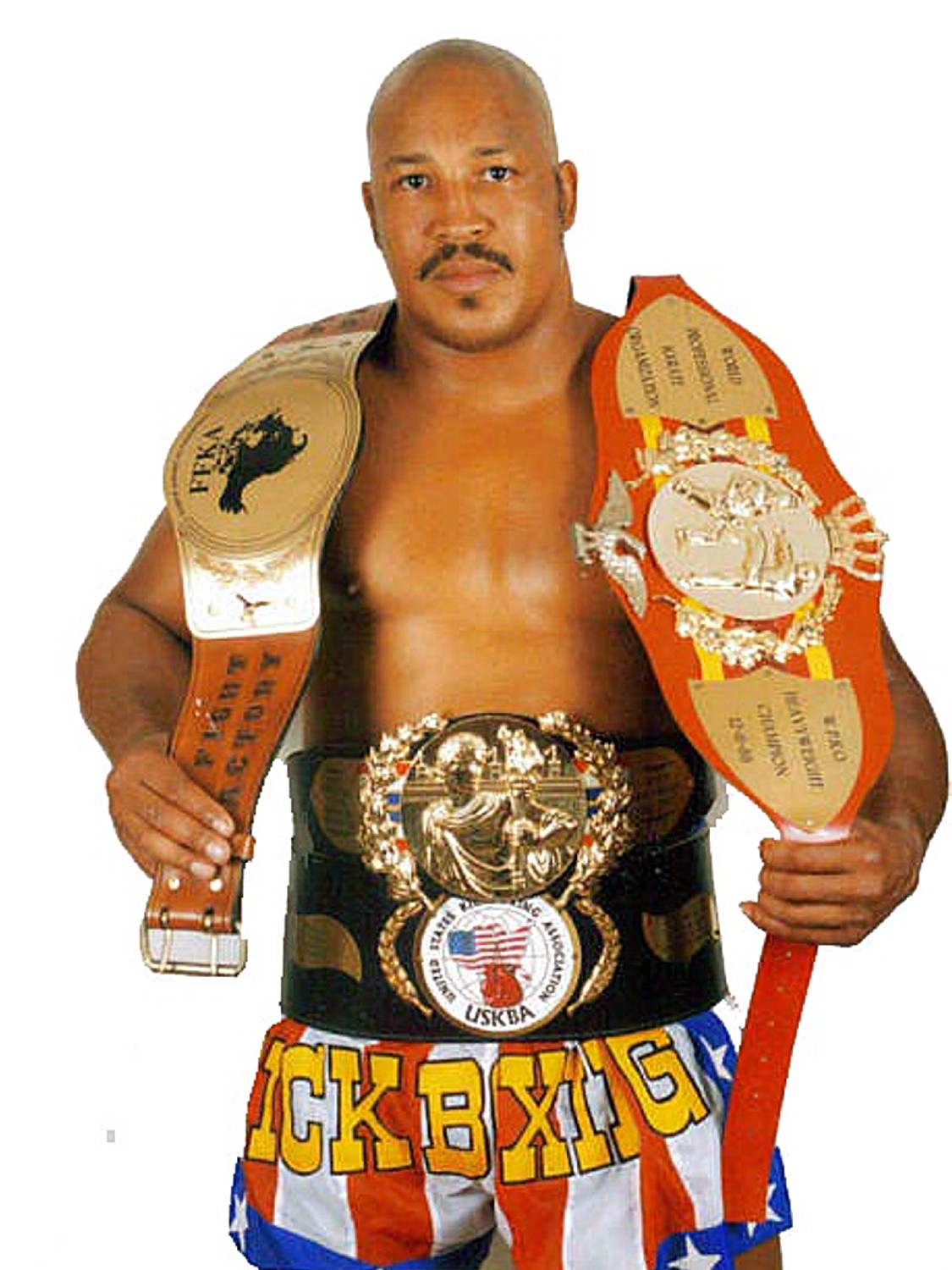
An Interview with Larry “Thunderfoot” Cureton
By William Rivera Shihan
Edited by Lydia Alicea
They say that lightning never strikes twice in the same place; unless it is a jolt of power delivered by Larry “Thunderfoot” Cureton.
Whether it is the power of his strikes, punches and kicks resulting from many years of training,
Or the power of humility, honor and discipline, evident of his martial arts skills and accomplishments,
Or the power of his courage and determination that bolts him into action as the firehouse alarm sounds,
Or the power of his words resounding in his poetry as he reaches out to the youth in our inner cities,
Or the power of his love, respect and boundless devotion to his mother, fiancée, and family,
It is the power of a man of humble beginnings, raised on unpretentious truths and a straightforward approach to life and its’ challenges.
Heroes: People tend to identify them as bigger than life beings like sports athletes or UFC fighters: Champions. entertainment artists past and present: Idols. Soldiers off to war: Conquerors.
Then there are the under-recognized, every-day individuals who just do their jobs without fanfare, who take their responsibilities seriously, or, who want to make a positive influence: parents, teachers, fire fighters, EMTs, police officers.
Some put their lives on the line each day, while working to help stem the tide of the pervasive deterioration afflicting our youth today. Larry “Thunder foot” Cureton is that hero.
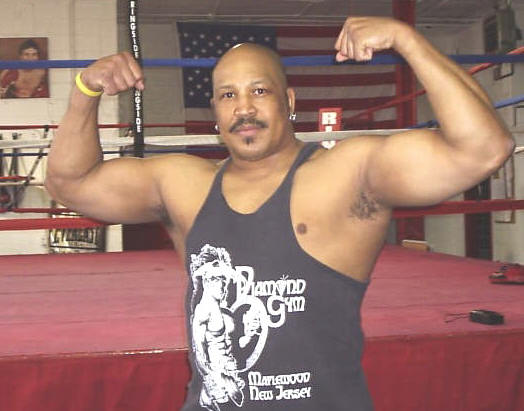
Upon meeting Thunderfoot, you are impressed by his physical stature: 6 ft. 1, 285 lbs of massive rock solid muscle. There is more here than meets the eye: holder of an impressive list of achievements as a boxer and kick boxer:
-
22-7 with 19 KOs. Title holder with:
-
The World Professional Kickboxing Organization (WPKO) as World Heavy Weight and US Super Heavy Weight;
-
The Professional Kickboxing Federation (PKF) as World Super Heavy Weight and International Super Heavy Weight;
-
The U.S. Kick Boxing Association (USKBA) as U.S. Super Heavy Weight;
-
And, with the Fight Factory Kickboxing Association (FFKA) as the North American Super Heavy Weight.
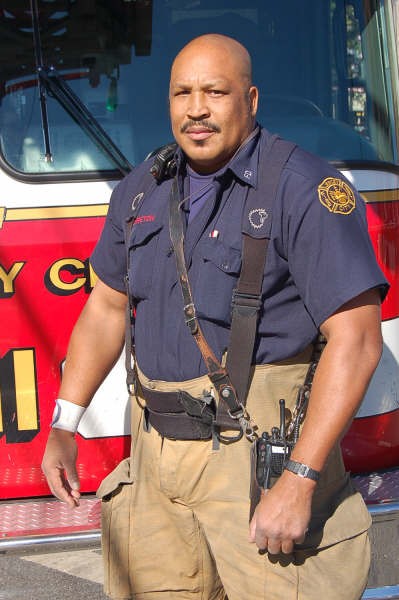
Thunderfoot is an active veteran firefighter with the Jersey City Fire Department, the town where he grew up with his mother and three sisters. He is also a personal trainer, bodyguard, a poet, a photographer, a writer and an artist with eye on acting.
Thunderfoot is an individual who chooses to evolve while still being true by what the martial arts have taught him. He is driven by a boundless spirit to create from everyday experiences. His intensity is infectious, poignant and inspiring. Did I forget to mention he is extremely funny? Please read on to learn about “The Power of Thunder.”
Martialforce: Master Cureton, let us start at the beginning.
L.Cureton: “My three sisters and I (I am the second youngest) were born and raised in Jersey City, New Jersey. We lived with my mother, grandmother, aunts and a cousin in a 3-family house. Mom still lives in Jersey City today.”
Martialforce: Did your sisters train in the martial arts as well?
L.Cureton: “My sisters used to train with me. My baby sister and the oldest both competed in tournaments. The oldest received her black belt.”
Martialforce: When did you begin your karate training?
L.Cureton: “I began my training in 1974 with Ron “Master Breaker” Jeter and continued under his guidance until about 1986. I later received my black belt in his style, Go-Kai Ju. As my desire to venture into others arts grew, I sought them. I trained with many great martial artists such as George Crayton, Lamar Thorton, Don Nagle and Don Kun Park. After years of training, I realized that no one particular art is best. It is the individual and the instructor that makes for a great martial artist.”
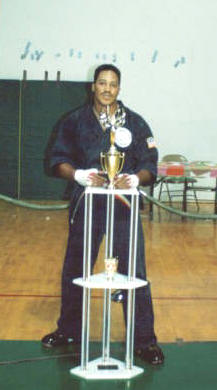
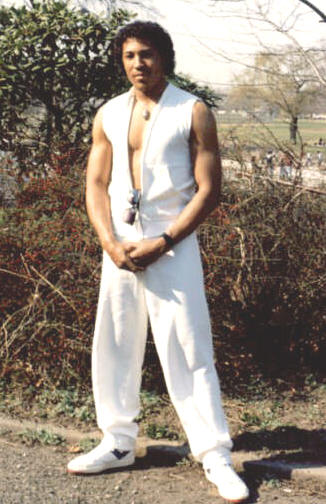
Martialforce: How did you get the nickname “Thunderfoot”?
L.Cureton: “When I began working out I would train in the basement of a church. One day I was kicking the bag very hard. The instructor came in and asked, “What is that?” Some of the guys training answered, “That’s Larry in the back kicking the bag. It sounds like thunder!” That was it. The church was located at the corner of Ocean and Linden in Jersey City.”

Martialforce: How long did you compete?
L.Cureton: “I began tournament fighting in 1974 till 1984 or 1985. I started boxing in 1983 and fought in the New York Golden Gloves in 1983, 1984 and 1985 (Silver Gloves). Then I began kickboxing.”
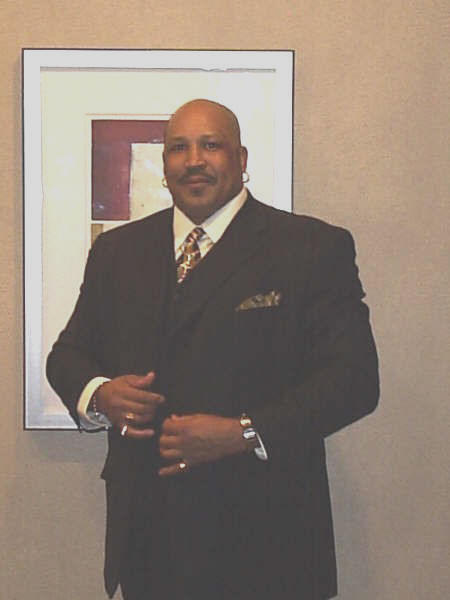
Martialforce: Describe some of your championship belts.
L.Cureton: “My first championship belt was the World Heavyweight Championship, Aaron Banks’ WPKO Tournament in 1988, at the Nassau Coliseum. I fought Dave Tanner from Connecticut. I remember rocking him in the first round with a right hand to the chin. The next was in Pennsylvania, the FFKA North American Super Heavyweight title. I fought Mike Muse and stopped him in the second.
My third belt was for the PKF under Jonas Nunez. I fought Mike Arroyo and I stopped him in the second. The fourth one was for the USKBA against Keith (The Brick Man) Jenkins of North Carolina and I stopped him in the second. The fifth was WPKO against Marty Vise. I won a decision.
The last was in 2000 for the PKF International Super Heavyweight title, held at The Exit nightclub in New York City. I stopped the guy in the third. I cannot remember his name but, I was 40 years old and he was 24. He talked about how I was an old man and how he would dance circles around me. I stopped him in the third. At the end of the fight, I said to him, “Not bad for an old man.”
Martialforce: As you moved from point fighting to boxing how did your training change?
L.Cureton: “I needed to work on my hands so I did more sparring. I began by going to the Times Square Boxing Gym. For months, I would leave the gym with a black eye and busted nose until I learned how to keep my hands up and keep that jab out.
Each time I went to the gym I was met with, “Ok, here’s the big guy.” It was known that I had trained in karate. So, yes, everyone wanted to spar and felt good beating up on this big guy until I got the technique down.
We did not do any pad work or bag work. My coach (Willie Dunn) believed that the best way to learn how to fight was to just fight. I would go in and spar 30 rounds with anyone that wanted to work. My training consisted of walking into the gym and asking, “Anyone want to spar?”
Martialforce: Describe the transition to kickboxing.
L.Cureton: “It was the end of 1985 or early 1986. Now that I knew how to use my hands and feet, I decided to give kick boxing a try. The boxing definitely helped because I got the rhythm of the footwork and the hands.
The transition to kickboxing was easy for me. I had the kicks down and my hands were there. A lot of guys are either kicking or punching but they are not kicking and punching. I worked on combinations in order to overwhelm the opponent.”
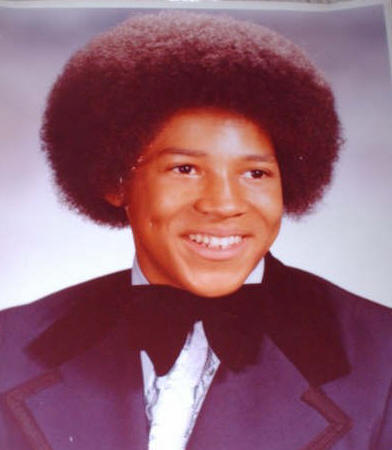
Martialforce: The other way around, how did the karate help your boxing?
L.Cureton: “The karate gave me the discipline to endure. I believe every kid should learn karate before he learns to box. It teaches obedience to authority and control. Boxing is technically an art but it does not have the background of the art.
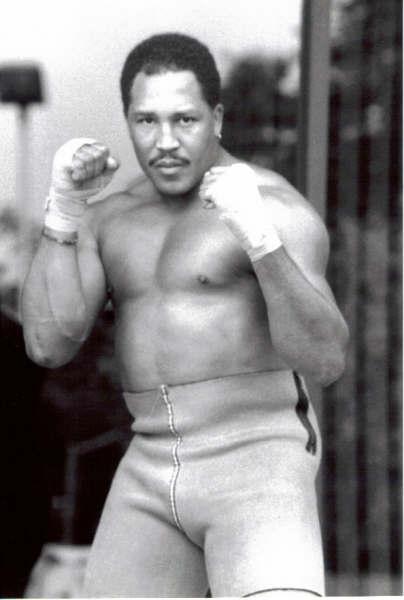
Martialforce: Can you describe the transition from your years of kickboxing training to Ultimate Fighting Championship (UFC) competition?
L.Cureton: “Prior to my entry into the UFC, I worked out with several jujitsu guys at Kearny Martial Arts. When down on the ground, I did not try to learn what to do to tap them out but rather learn how not to let them tap me out. I figured that if I hit them, I was going to hurt them. I just wanted to be in a position where I am not the one getting arm barred, or ankle locked, stuff like that. My training was nowhere as complete as it should have been. When Marco Ruas put me in an ankle lock I did not know what he was doing, I had never seen that.”
Martialforce: Yet you held him in a guillotine. How did you accomplish that?
L.Cureton: “It was a reaction. He went for a double leg takedown and my reaction was to grab him. His arm was still in there and the guy was comfortable. When Ruas fought in the finals against Paul Varelans, he had him in a guillotine and was able to lift him up. Ruas was like Gumby, the guillotine didn’t seem to bother him at all.”
Martialforce: How does the mixed martial arts of today compare to the competition during the period when you fought in the UFC?
L.Cureton: “I fought in UFC V and VII. At that time, it was all about fighting where different arts and styles were pitted against each other with fewer rules. Today, competitors are on equal foothold because they have stand up as well as ground skills.
Past competitions were set up where grapplers fought against strikers. The UFC was comprised of guys that were karate and those who were say, jujitsu. Today competitors are all “mixed martial artists”. That is the difference.
What is currently taking place in mixed martial arts is necessary, and I will tell you why. Everyone thinks grappling is the cure all in a fight, but in a street situation, if you do not have real stand up skills you are going to have a problem. You can be the best grappler in the world but if more than one opponent confronts you, what will do? You cannot take both of them to the ground and you cannot put both of them in a guillotine. You need to have a well-rounded program.”
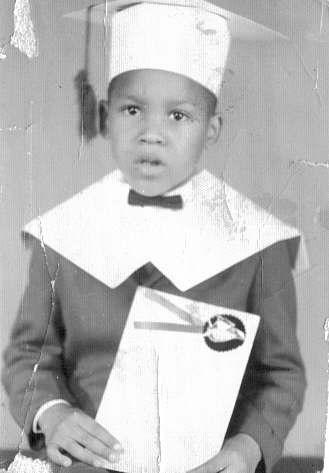
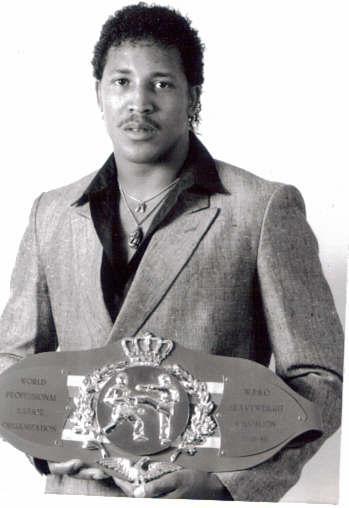
As you know, the samurai had their code that they lived by; it was their outlook on life. The code is based on the basic principles of bushido: duty, loyalty, morality, justice, polite courtesy, compassion and honor. Now, do you have to be a samurai to live that way? No. It should just be the principles of being a man, to show compassion because without it, man is nothing more than an animal.
The MMA of today is different from when I fought as well from several years ago. The rules are all about violence with a lack of discipline, compassion and humility. It would be encouraging to see more of the essence of the martial arts in MMA, which is fighting with the Budo aspect.”
Martial force: Would you do it again?
L.Cureton: “Well, I have thought about it, but I’ve been there and done that.” But make me the right offer. And give me an opponent in my age range. We can talk.
Martialforce: What is your approach to training students?
L.Cureton: “I draw from my training of “Combined Forces” martial arts. I begin a student with the basics, stances, different punches, blocks and kicks because the foundation of any martial art is based on them. You will learn high blocks, head blocks and upper blocks. Bottom line, it is all about the block.
Beginning someone on sparring is different. Once students have learned the fundamentals, I let them tell me when they want to get on the floor. Some do not wish to spar and others just do not want to get hit. For them the goal to training has more to do with prevention and not competition. It is all about the ability to do this if they get hit or that if something were to happen.“
Martialforce: Do you teach self-defense separately?
L.Cureton: “I can teach you what to do if a person grabs your arm or if he throws a punch. Once you have learned technique, the key to self-defense is to never put yourself in a potentially confrontational situation. Always be aware of your environment is important, I teach my students to never let anyone invade their space. If I can touch you, you are too close. If you are trying to close the gap from here (extending arm), I have time to do whatever I have to do to you. Therefore, it is crucial to always keep the distance. In self-defense, your mind is the key. It is all about knowing what I am going to do before you react to it.”
Martialforce: What is the major difference between kickboxing and karate?
L.Cureton: “Kickboxing is boxing with the hands and kicking with the legs with combinations that flow from one to another. In full contact, karate people do not necessarily have boxing skills. They just kick hard. A good kick-boxer should be able to get into the ring and defend himself without any problem with a boxer. Unfortunately, many kick-boxers will get into the ring knowing only how to kick and as a result, they get their heads beat up.
Often a kick boxer can have difficulties defending himself against a boxer because they do not have the hand skills. That is the difference between kickboxing and full contact karate. Today I am concerned with the schools, which are opening and are teaching karate and kickboxing. How can you teach kickboxing when you have never kickboxed?
There are instructors who will tell their students, “Get the head gear we are doing kickboxing now.” It does not work that way. It would be as if I opened up a school saying I am teaching karate and ballet and never had a ballet lesson in all my life. How can I advertise that?
Just because someone punches and kicks hard does not make him a kickboxer. The public at large does not understand this. Parents are not educating themselves before making that financial commitment for their child’s instruction just as they should for her college education. Instead, they will blindly trust that sign in the window, which reads: “Instruction in karate and kickboxing.”
Martialforce: You also coach and train. How would you describe a good student?
L.Cureton: “One who really wants to train, one who is not afraid to train hard and has a strong work ethic. Today everyone just wants to go out there to fight and win. You cannot win unless you train.
I am currently training someone who is a mixed martial artist (Chris Wing) and he possesses the discipline to endure. I tell him to give me a 100 and he gives me a 100. If I ask him to stand on his head in the corner, he does so.
Martialforce: Explain how you teach.
L.Cureton: “What I teach is practical. Even if it is for cardio, everything we do is for real. We are throwing combinations left, right, hook, right hand, right knee, left knee. One, two, hook, right hand, right knee, slip right hand, hook, double jab, right hand. I am not doing something that just looks good, it works and has application.”
Martialforce: Do you train men and women differently?
L.Cureton: “No, I do not, but they have to think differently. A woman needs to realize that she may not be as strong yet she can use her subtleness. They have the element of surprise. An attacker may not expect retaliation if he hits her, bam, bam!
I teach my female students that they have what “the window of opportunity.” You have to strike hard and fast (first), because if you do not immobilize them, your adversary will be little pissed off. I tell them to kick from the waist down and punch from the waist up. You kill a weed at the roots.
Training should be about technique over power; power means nothing without technique. I picked it up fighting point tournaments with people like Kevin Thompson. The first three times I fought him I lost. I was like, “how the hell can I let this little guy beat me?” It was because I was trying to hit a home run. Then I started using my natural abilities. I beat him the last three times. After a while, you learn to combine them well. Kevin Thompson is a great fighter and a great person.
Martialforce: How did you get involved in bodyguard work? Does one need a particular mindset?
L.Cureton: “I thank my friend, Chuck Wepner for getting me my first job. One day, someone contacted him in need of his services. Unfortunately Chuck was not available but called and asked if I would consider the job. I accepted and since then, have developed a great working relationship with the man. The mind set needed is the same as one uses in everyday life, to always stay sharp. To achieve this you use what ever means necessary. It is not a matter of what you can do but whether I can think of doing it first. “
Martialforce: Do you follow a particular diet or regimen?
L.Cureton: “Your body burns carbohydrates for energy but if you don’t burn them during the day it will later convert to sugar and store as fat. This is why I have my carbs first thing in the morning then allow the body to burn the body fat for energy for the rest of the day. Rather than to eat carbs all day and have the body store what I did not burn.
During the course of the day, my body burns up the carbohydrates I had in the morning, then switches over and starts using the body fat as energy because there are no more carbs to burn. Later in the day, I try to stay away from the carbs and just eat meat and vegetables. If it is protein like meat, or fish, you can eat as much as you want.
It is not difficult to follow this. Simply, after twelve noon, eat lean meat and no carbs. By noon, your energy level decreases. Remember though, that if you choose to eat carbs after noon, and don’t plan on working out, you will not burn them.”
Martialforce: Do you run daily? What do you do for cardio?
L.Cureton: “To be honest, I have not run in over a year. For cardio I go to the boxing gym, jump a little rope to warm up, then put on the gloves, I get in the ring and spar.”
“I think the whole world is not that complicated. People try to make it seem complicated to give credibility to their own existence. Life is not that hard.”
Larry "Thunderfoot" Cureton
Martialforce: Thunderfoot, you have chosen a path that many overlook: reaching out to youth. Tell us who are your audience and where you speak.
L.Cureton: “It is predominately the minority youth of our inner cities in New Jersey, often in the city where I grew up, Jersey City. I speak at grammar, middle, high schools; anywhere they will let me talk.”
Martialforce: You are an extraordinary role model. What is your goal when speaking to kids?
L.Cureton: “I want to get a message to kids that will help them think about who they are, to find their individuality and to realize that it is more important to just be yourself. Too often, we see that kids want to be just like one another. I want to help them realize that if you allow others to tell you how you should think, or what sneakers you should be wearing, or how low your pants must fall, or what music you should be listening to, or why you shouldn’t bother with school, then, you will never become aware of who you really are.
The youth of today is into rap music. I choose to reach them without making it boring. I use poetry, my poetry, which is rap without the music.”
Martialforce: Do you feel teachers should attain some level of martial arts training?
L.Cureton: “I am a firm believer that parents and teachers must consistently use discipline to teach children. Yes, I certainly think teachers can benefit from some form of martial arts instruction.
Each day we are witnessing and tolerating an ever-growing level of violence and disrespect in our schools. Many are reaching crisis levels making it impossible to teach students who want to learn. Disruptive and confrontational youth are largely becoming the norm instead of the exception with school administrators struggling to maintain order and control. Teachers are often the target of physical and verbal abuse.
At the least, they should be able to defend themselves from potential harm. With some form of martial arts training, teachers can attain an improved level of commitment or confidence, which they can convey to their students through enhanced teaching skills. Teachers with self-assurance are in a better position to control what happens in the classroom. It has nothing to do with religion but everything to do with becoming a stronger individual.
When I talk to the kids, I can see in their faces that they want to learn, they want knowledge. However, you must capture their interest. We get into many subjects especially the ones that can hurt them: drug and alcohol use, violence and gangs.
I open up my talk with a 4 to 5 minute video of one of my fights. It is followed by an announcement. Now the kids are in awe waiting for me to speak!
“Don’t think I’m some kind of punk because my clothes don’t have all those fancy labels
Cause if beef comes my way, I’m ready, willing and able.
I dress for me; I do not dress for style.
I buy my own clothes, I am grown, I am not a child.
It’s alright to be different, you ain’t gotta be cool or hip.
Just because your man drives one, don’t mean you have to buy the same whip.
You’re spending your money on cars and clothes, but eating free cheese like a mouse.
What you need to do is save that money and buy your mom a house.
I can buy all those fancy labels, I got a good job, I got it made.
But if they want me to walk and advertise that stuff, this brother wants to get paid.
See, if my boy did something wrong, I cannot catch the blame.
But see one of you’ll might catch it because you all dress the same!”
Example: “I’m looking for a young black guy wearing a baseball cap, oversized white t-shirt, jeans and sneakers. How many of you are dressed up like that?
Be yourself do not try to be somebody else!”
Larry “Thunderfoot” Cureton
Martialforce: Why do you think the number of gangs continues to rise?
L.Cureton: “The prevalence of single parent families, together with the departure of the traditional “family” unit must be considered as some of the contributing factors for why. There are patterns. A single parent household does not signify dysfunction, yet for too many youth the gang becomes their “family” unit. Like a family, there is a head “mother” and “father” figure, and everybody else is a sibling. They watch your back and that’s what kids are looking for.”
The past does not always predict the future.
“You can’t blame anybody but yourself, because that is the life you choose.”
“I do not need to fight to prove that I am a man. I tell people all the time I don’t think I am tough and I do not think I am bad, but like David Banner used to say, you won’t like me when I am mad.”
“You have to practice what you preach. You have to live by your word.”
Larry “Thunderfoot” Cureton
Martialforce: What prepared you for life?
L.Cureton: “My mother always taught me to pay attention. She said, “Keep your eyes and ears open and your mouth close.”
Martialforce: What would you like to see yourself doing someday?
L.Cureton: “I would like to see myself in a movie, about me. The story would be about a fighter who became blind due to unfortunate circumstances. A friend brings him to his master to train (that would be me). Here’s the main idea: he knows how to fight, but I am going to teach him to think.” My friend David Tanner wrote it.
Martialforce: Are you writing at this time?
L.Cureton: “Yes, I am currently working on one. It is a book of poetry geared towards women. I want to give females a wake up call. The title will be “The Empowerment of a Woman by a Man.”
I sat next to Thunderfoot at a Kickboxing event promoted by Louis Neglia and Ray Longo at The Capitale in Manhattan. Thunderfoot’s insight into training, technique and strategy show why he is sought as a trainer and coach. A dip of the shoulder a step with the foot and he was able to tell what techniques were going to be thrown. It was akin to listening to a chess master playing 5 and 10 moves ahead of an opponent.
His knowledge in the various fields he has devoted his life to and his ability to impart that knowledge is why Larry “Thunderfoot” Cureton is a Master in the Martial Arts.
Thank-you to Jennie Louie Sensei for our formal introduction to Master Larry “Thunderfoot” Cureton.
We at Martialforce.com wish to extend our congratulations to Master Cureton and his fiancée, Rosa Garcia, on their recent engagement. The best wishes to them.
Thank-you Master Cureton for enabling us to witness “The Power of Thunder.”